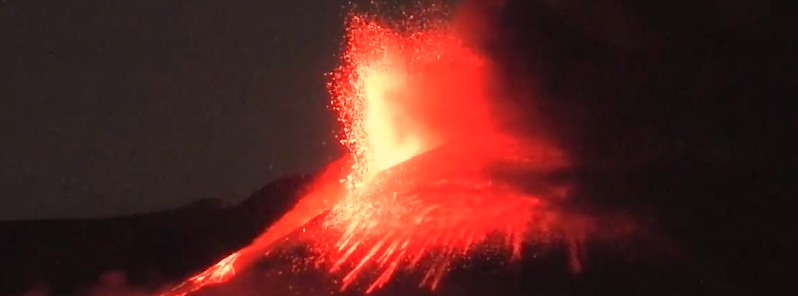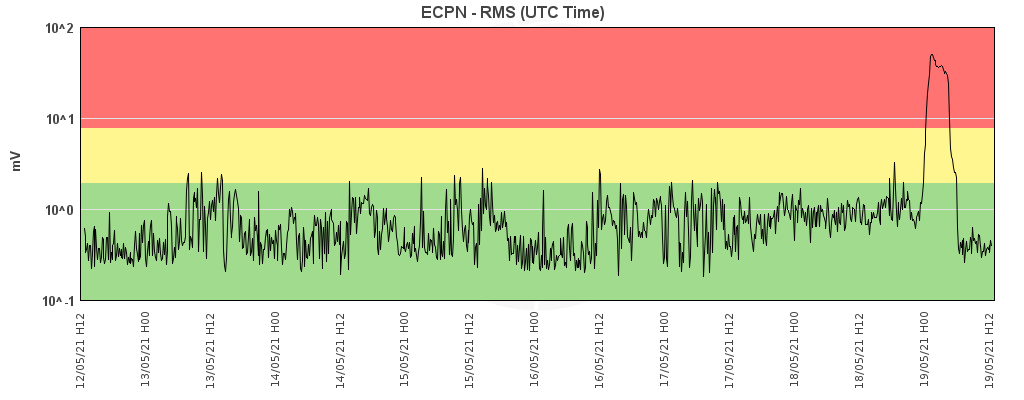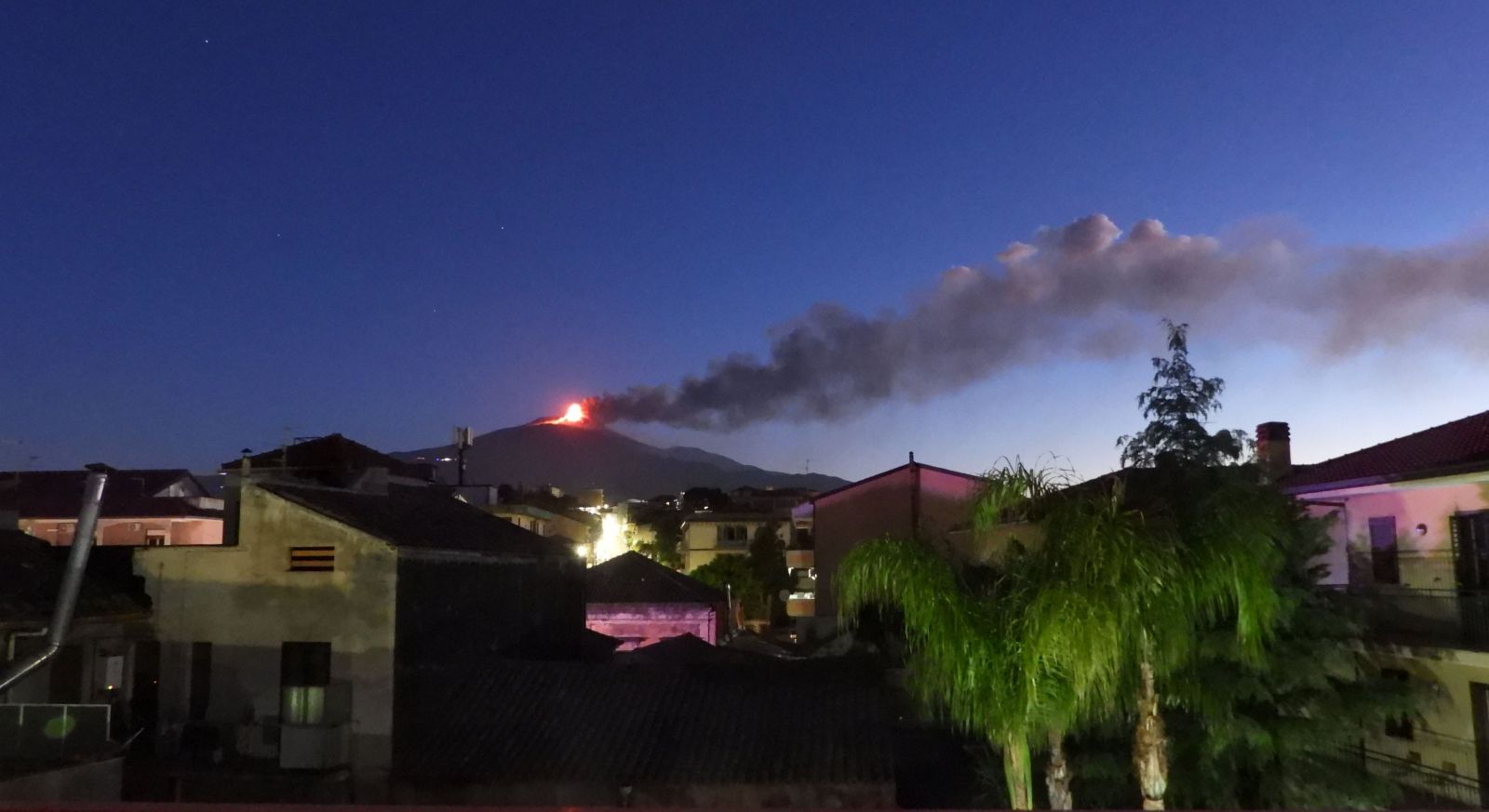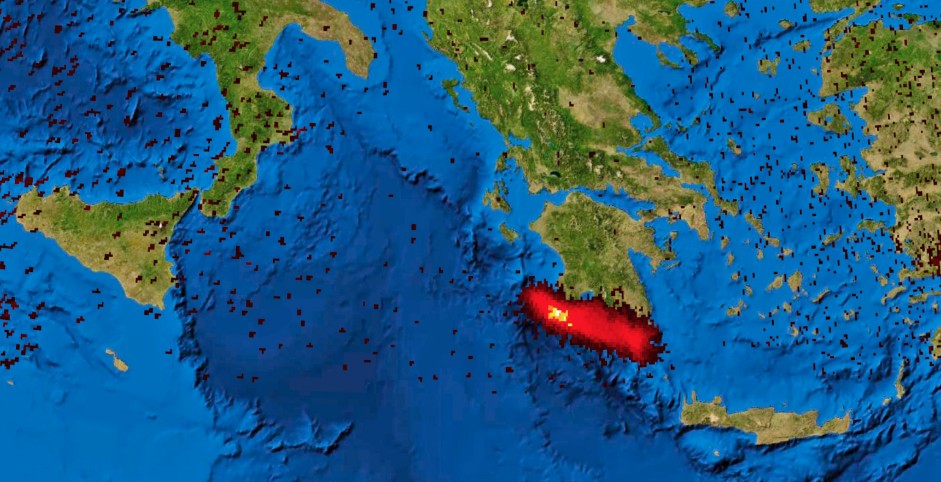Etna volcano erupts again after 6 weeks of relative calm, Italy

Strong strombolian activity resumed at Etna's Southeast Crater at 00:21 UTC on May 19, 2021, and evolved into the 18th paroxysmal eruptive episode since February 16 and the first since April 1. The entire event lasted about 5 hours.
Strombolian activity intensified at 00:34 UTC today, with a sudden increase of volcanic tremor to high values and ash emissions toward the E. The source of the tremor was localized near the Southeast Crater at a depth of about 2.5 km (1.5 miles) above sea level.

The activity continued intensifying and evolved into a new paroxysmal episode at around 01:17 UTC, producing a small lava flow at 02:35 UTC.
The Aviation Color Code was raised to Red at 01:21 UTC for the first time since April 1.
The volcanic ash emissions rose up to 6 km (20 000 feet) a.s.l. at 02:38 UTC.
Scenes from the episode of lava fountaining at #Etna's Southeast Crater early on 19 May 2021, seen from home in Tremestieri Etneo (20 km south of the summit). Real sound, every now and then you can hear the rumbling of the volcano between the birds chirping and singing. pic.twitter.com/0hafH8Qvfn
— Boris Behncke (@etnaboris) May 19, 2021
This morning’s walk included #Etna just casually erupting in the distance pic.twitter.com/8ogKylN76C
— David Vella (@indeox) May 19, 2021
Spectacular #MountEtna eruption photographed from #Gozo #DanielCilia #GozoMalta #Etna @TheTimesofMalta @VisitGozo https://t.co/b11qWCbPIi
— Stefan Grech (@grechste) May 19, 2021
Lava fountaining ended around 05:16 UTC, while the small lava flow that expanded in the SW direction appeared to be poorly feed.
Volcanic tremors started decreasing at the time, settling at average levels at depths between 2.8 – 2.9 km (1.7 – 1.8 miles) a.s.l.
The Aviation Color Code was lowered to Orange at 05:19 UTC.

Etna erupting on May 19, 2021. Credit: Boris Behncke/INGV

SO2 column produced by the eruption of Etna volcano on May 19, 2021. Credit: Copernicus EU/Sentinel-5P, ADAM Platform, Antonio Vecoli
This was Etna's 1st paroxysmal eruptive episode since April 1 and the 18th since February 16. All of them can be found at the following link: watchers.news/tag/etna.
Geological summary
Mount Etna, towering above Catania, Sicily's second-largest city, has one of the world's longest documented records of historical volcanism, dating back to 1500 BCE.
Historical lava flows of basaltic composition cover much of the surface of this massive volcano, whose edifice is the highest and most voluminous in Italy.
The Mongibello stratovolcano, truncated by several small calderas, was constructed during the late Pleistocene and Holocene over an older shield volcano. The most prominent morphological feature of Etna is the Valle del Bove, a 5 x 10 km (5.1 x 6.2 miles) horseshoe-shaped caldera open to the east.
Two styles of eruptive activity typically occur at Etna. Persistent explosive eruptions, sometimes with minor lava emissions, take place from one or more of the three prominent summit craters, the Central Crater, NE Crater, and SE Crater (the latter formed in 1978).
Flank vents, typically with higher effusion rates, are less frequently active and originate from fissures that open progressively downward from near the summit (usually accompanied by strombolian eruptions at the upper end).
Cinder cones are commonly constructed over the vents of lower-flank lava flows. Lava flows extend to the foot of the volcano on all sides and have reached the sea over a broad area on the SE flank. (GVP)
Featured image: Etna volcano erupting on May 19, 2021. Credit: Boris Behncke/INGV

Commenting rules and guidelines
We value the thoughts and opinions of our readers and welcome healthy discussions on our website. In order to maintain a respectful and positive community, we ask that all commenters follow these rules:
We reserve the right to remove any comments that violate these rules. By commenting on our website, you agree to abide by these guidelines. Thank you for helping to create a positive and welcoming environment for all.